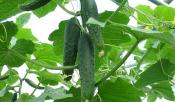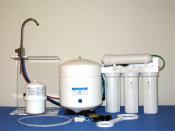Search
Login
Recommended
Mineral fertilizers. Types and application
Fertilizers of organic origin contain natural minerals that are slowly decomposed in the soil by microorganisms. For sites with heavy use, sometimes organics are not enough and mineral fertilizers come to the rescue. This type of fertilizer with a lack of minerals will quickly restore the plant, accelerate growth and improve flowering.
Content
- How to choose the best mineral fertilizer video
- Specialty Fertilizers
- Phosphate fertilizer
- Nitrogen fertilizer
- Potash fertilizer
- Magnesium and Calcium
- How to avoid excess mineral fertilizers
- Mineral fertilizer damage
How to choose the best mineral fertilizer
A large number of mineral fertilizers are presented in stores, they differ in action, composition and dosage. The separation of fertilizer is based on its composition, this is done for the convenience of the consumer and the exact dosage. There are mineral fertilizers for coniferous or flowering plants, for fruit and vegetable crops.
Fertilizers differ in their physical properties, they can be granular or liquid. Granular fertilizer is used during soil preparation for sowing and for fertilizing plants. Liquid fertilizer is intended primarily for irrigation.
In addition, there is a division into complex fertilizer, potash, calcium, nitrogen, phosphate ... each of them has its own purpose. Mineral fertilizers are applied in spring or autumn, depending on the type of mineral.
Many are also interested in the price range, mineral fertilizers, the price of which is above average, are usually intended for field treatments, and their weight is much larger. Different manufacturers set different prices, but in any case, mineral fertilizers remain inexpensive compared to organic ones.
Specialty Fertilizers
The composition of such fertilizers is designed for specific plants or their groups. For example, plants need a lot of phosphorus and potassium for luxurious flowering, a lot of nitrogen for a lawn, fertilizer for azaleas and rodendrons will acidify the soil. Some formulations contain not only mineral, but also organic substances to accelerate plant growth.
Phosphate fertilizer
Phosphates have a great influence on flowering and crop quality, while they do not have a significant effect on crop yield. Phosphate fertilizers are applied in the fall and spring every 3-4 years. The required dose of superphosphate is divided into two parts, in the autumn the first part is applied during digging, in the spring the second part of the fertilizer is mixed with the topsoil.
Urea phosphate lowers the pH of the soil, thereby improving the solubility of trace elements.

Nitrogen fertilizer
Nitrogen is responsible for the growth of branches and leaves. Nitrogen deficiency is characterized by pale leaf color and slow growth; an excess of mineral leads to susceptibility of plants to diseases and pests. Fertilizer is used during spring and summer every year.

Ammonium sulfate lowers the pH of the soil and is suitable for all plants. Potassium nitrate is ideal for foliar top dressing.
Potash fertilizer
Potash fertilizer increases the resistance of plants to fungal diseases, drought and frost. Vegetables grown in soil rich in calcium are stored longer and contain vitamin C more than normal.

Potassium is used in the spring before sowing; on heavy soils, repeated application in autumn is possible. Keep in mind that potash salts can not be used as fertilizer for potatoes, fruit trees, ornamental plants and berries - they do not tolerate chloride, these substances are more suitable for processing fields. Potassium sulfate and potassium nitrate (potassium nitrate) enrich the base for all plants.
Magnesium and Calcium
Calcium and magnesium act as a soil pH regulating fertilizer (liming). A lack of magnesium leads to leaf chlorosis, calcium inhibits plant growth and increases the absorption of nutrients. Magnesium and calcium are presented as calcium oxide, magnesium oxide and calcium carbonate.
Magnesium oxide and calcium oxide are introduced a few weeks before sowing the seeds. Calcium oxide is suitable for all soils, calcium oxide is recommended for medium and light. Calcium carbonate is universal; it is better suited for light soils than magnesium oxide and calcium.
Calcium liming is performed every 4 years in the fall. Fertilizer calcium + magnesium is applied to the soil once every 8 years at a low rate of magnesium, or every 12 years with its average value.
How to avoid excess mineral fertilizers
The norms of mineral fertilizers are individual for each group of plants, recommendations of the manufacturer will help to avoid accidental excess. Sandy soils need a small amount of minerals, with an increased dose, the roots are quickly damaged, and beneficial microorganisms die. Mineral fertilizers are not so terrible for clay soils, here plants absorb minerals as much as they need.

Mineral fertilizers in capsules solve the problem of excess, but if used correctly. Fertilizer is applied only once - at the beginning of the growing season. The minerals contained in the fertilizer are slowly released into the soil and are absorbed by the plants in small quantities.
The release rate depends on the temperature and humidity of the substrate, the warmer, the more substances are released. The time of release of minerals and manufacturers is fixed, indicating the duration of capsule decomposition in days.
Mineral fertilizer damage
Frequent fertilizing with mineral fertilizers destroys the bacterial flora of the soil. If mineral fertilizer enters a lake or other body of water, it will cause violent growth of algae, which will lead to a lack of oxygen and organisms living in the body of water will die.
The introduction of mineral fertilizers in excess does not have the best effect on plants - diseases appear, growth stops. When working with fertilizers, use a protective mask and gloves; do not spray plants near pets.





